#slavonian
Explore tagged Tumblr posts
Text

A horned grebe (Podiceps auritus) gathers nesting material in Estonia
by Tim Melling
#horned grebe#slavonian grebe#grebes#birds#waterfowl#podiceps auritus#podiceps#Podicipedidae#Podicipediformes#aves#chordata#wildlife: estonia#wildlife: europe
49 notes
·
View notes
Text











On St. Andrew's Day, looking back on some highlights from our Scotland trip in the spring; Slavonian Grebes at Loch Ruthven, view and Peacock butterfly at Strathdearn, Pied Wagtail at the cottage we stayed at, Black-throated Divers and Red Grouse at Lochindorb, view at Laggan Dam, Osprey at Lossiemouth, Dipper at Nethy Bridge, beautiful view at Cairn Gorm and one from the cottage.
#scotland#st andrews day#april#may#2024#wildlife#photography#peacock#red grouse#slavonian grebe#black-throated diver#strathdearn#cairn gorm#cairn gorms#lossiemouth#moray#osprey#the highlands#outdoors#europe#england#uk#world#nature#birdwatching#butterflies
6 notes
·
View notes
Text
Countryhumans
Croatia-Slavonian Kingdom


9 notes
·
View notes
Text

Slavonian Grebe (Podiceps auritus)
6 notes
·
View notes
Text

Moon on the Sea at the 28th Slavonian Biennial "New Paradigms of Happiness, from Osijek Dada to Contemporary Chaos" curated by Valentina Radoš
Photo: Tomislav Herega
#art#installation#participatory installation#yellow#kaloyan ivanov#osijek#croatia#28th slavonian biennial
15 notes
·
View notes
Text
It's okay no really it's fine i'm okay
#korka if she wasn't plagued by ''YOU HAVE TO GET MARRIED. YOU HAVE TO HAVE A BABY. N O W'' thrice a month every month for years now#where's the girl who promised to set me up with a Slavonian guy⁉️⁉️ girl i will learn how to farm potatoes i prommy /j#it's like. phew. i need to breathe. and not let my sense leave me. i have other things to worry about it
4 notes
·
View notes
Text


Slavonian grebe
Can't believe I managed to see this beautiful bird this year, I could have spent hours watching the pair of them. These were one of only a few pairs that breed in Scotland, very special


0 notes
Text

Horned Grebe or Slavonian Grebe (Podiceps auritus), family Podicipedidae, order Podicipediformes, Finland
photograph by Teemar Vaino (@teemar72)
349 notes
·
View notes
Text
Word of the week rules and submissions!
What is this?
This is no longer a tournament as that takes too much time and admin. We have also already decided that многоꙮчитїй/ mnogoočitii from Old church slavonian is the best word, so no need to do that again. Instead, I will use this blog to highlight a word (or a couple of words) every week (or other time period if the queue runs out) from languages which aren't English. This will be based on reader submissions with me editing for clarity and adding a blurb about the language, much like in the tournament.
In short, tell me about your favourite words! Let's all learn something new! (My favourite phase of the tournament was definitely research/round one)
Who are you?
I'm a linguistics student and language nerd from Sweden who decided to run a tournament of non-English words because I wanted to highlight language diversity. My native language isn't English, so please be kind if my posts are worded weirdly sometimes (or my username is misspelled lol)
What makes a word good?
There are many ways that a word can be good, but here are some examples: it sounds good/feels good to say, the script looks nice, it denotes an interesting concept, it denotes a concept you like, it does something interesting grammarwise, usagewise or soundwise, it's funny, it's an interesting/fun compound, it has an interesting/fun etymology, it just has good vibes... The possibilities are endless
Rules:
No words in English, but loanwords from English are allowed with good motivation
No conlangs (I love them but the focus is on natural language)
Words from signed languages are allowed and encouraged as long as you can provide an explanatory picture or film for the sign
Words from pidgins are allowed
Words from extinct languages are allowed
Usage should be widespread within a language community (if it isn't/wasn't used in the language it doesn't belong, neither does words only your family/friend group uses, but slang words are allowed)
No words that have appeared in the tournament or previously on word of the week (search for the word on my blog, all words are tagged)
How submissions and posting work (read these before submitting):
Each person is can make two submissions at a time. Please wait until yours have been posted before you submit more
The submission form is currently open. It will remain so until I have too many unposted submissions, then open again when those have been scheduled
If you're able to, please provide an IPA transcription for your word (the International Phonetic Alphabet has a sign for each sound used in any language, which makes transcription of exact pronounciation possible)
You will need to provide a translation/explanation of the word in English since that is the language used on the blog for ease of communication and reach. If the exact translation of a word is part of what makes the word good, please provide that too
It is possible to be credited for your submission if you want to
If more than 5-6 words in the same language are submitted, all of them might not be posted until some time has passed to avoid one language dominating
I reserve the right to pick which words I want to share if I have many submissions and don't want to do all of them. I do this in my very limited spare time because I think language is fun and if it doesn't spark joy I won't do it
Submissions will be fact-checked, edited for clarity and get a short text about the language. If I find something interesting while researching I might add a note about that as well
Have fun! I can't wait to see your submissions and learn something new!
Submit your word(s) through this form
39 notes
·
View notes
Text
Socialism: Utopian and Scientific - Part 2
[ First | Prev | Table of Contents | Next ]
At the request of my friend, Paul Lafargue, now representative of Lille in the French Chamber of Deputies, I arranged three chapters of this book as a pamphlet, which he translated and published in 1880, under the title: "Socialisme utopique et Socialisme scientifique". From this French text, a Polish and a Spanish edition were prepared. In 1883, our German friends brought out the pamphlet in the original language. Italian, Russian, Danish, Dutch, and Roumanian translations, based upon the German text, have since been published. Thus, the present English edition, this little book circulates in 10 languages. I am not aware that any other Socialist work, not even our Communist Manifesto of 1848, or Marx's Capital, has been so often translated. In Germany, it has had four editions of about 20,000 copies in all.
The Appendix, "The Mark", was written with the intention of spreading among the German Socialist party some elementary knowledge of the history and development of landed property in Germany. This seemed all the more necessary at a time when the assimilation by that party of the working-people of the towns was in a fair way of completion, and when the agricultural laborers and peasant had to be taken in hand. This appendix has been included in the translation, as the original forms of tenure of land common to all Teutonic tribes, and the history of their decay, are even less known in England and in Germany. I have left the text as it stands in the original, without alluding to the hypothesis recently started by Maxim Kovalevsky, according to which the partition of the arable and meadow lands among the members of the Mark was preceded by their being cultivated for joint-account by a large patriarchal family community, embracing several generations (as exemplified by the still existing South Slavonian Zadruga), and that the partition, later on, took place when the community had increased, so as to become too unwieldy for joint-account management. Kovalevsky is probably quite right, but the matter is still sub judice [under consideration].
The economic terms used in this work, as afar as they are new, agree with those used in the English edition of Marx's Capital. We call "production of commodities" that economic phase where articles are produced not only for the use of the producers, but also for the purpose of exchange; that is, as commodities, not as use values. This phase extends from the first beginnings of production for exchange down to our present time; it attains its full development under capitalist production only, that is, under conditions where the capitalist, the owner of the means of production, employs, for wages, laborers, people deprived of all means of production except their own labor-power, and pockets the excess of the selling price of the products over his outlay. We divide the history of industrial production since the Middle Ages into three periods:
handicraft, small master craftsman with a few journeymen and apprentices, where each laborer produces a complete article;
manufacture, where greater numbers of workmen, grouped in one large establishment, produce the complete article on the principle of division of labor, each workman performing only one partial operation, so that the product is complete only after having passed successively through the hands of all;
modern industry, where the product is produced by machinery driven by power, and where the work of the laborer is limited to superintending and correcting the performance of the mechanical agent.
I am perfectly aware that the contents of this work will meet with objection from a considerable portion of the British public. But, if we Continentals had taken the slightest notice of the prejudices of British "respectability", we should be even worse off than we are. This book defends what we call "historical materialism", and the word materialism grates upon the ears of the immense majority of British readers. "Agnosticism" might be tolerated, but materialism is utterly inadmissible.
And, yet, the original home of all modern materialism, from the 17th century onwards, is England.
[ First | Prev | Table of Contents | Next ]
26 notes
·
View notes
Text

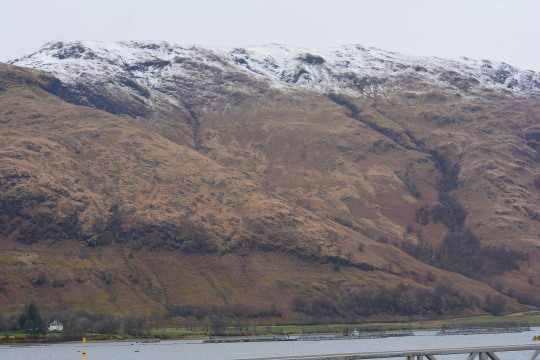










On St. Andrew’s Day, looking back on some amazing memories from the Scotland trip we went on in April; Lapwing at Lochindorb, view at Loch Eil, Slavonian Grebe at Loch Ruthven, view at Lossiemouth, Osprey, Otters on Mull, scurvygrass at Burghead, Dipper, Wheatear on Mull, view on Mull, view at Troup Head and Red Grouse at Lochindorb.
#scotland#europe#photography#scurvygrass#red grouse#lapwing#slavonian grebe#lossiemouth#dipper#otter#wheatear#mull#loch eil#burghead#osprey#birdwatching#mammals#flowers#nature#2023#april
31 notes
·
View notes
Text
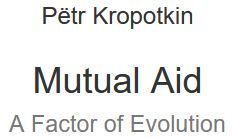
Chapter 5: Mutual Aid in the Mediæval City
Growth of authority in Barbarian Society. — Serfdom in the villages. — Revolt of fortified towns: their liberation; their charts. — The guild. — Double origin of the free mediæval city. — Self-jurisdiction, self-administration. — Honourable position of labour. — Trade by the guild and by the city.
Sociability and need of mutual aid and support are such inherent parts of human nature that at no time of history can we discover men living in small isolated families, fighting each other for the means of subsistence. On the contrary, modern research, as we saw it in the two preceding chapters, proves that since the very beginning of their prehistoric life men used to agglomerate into gentes, clans, or tribes, maintained by an idea of common descent and by worship of common ancestors. For thousands and thousands of years this organization has kept men together, even though there was no authority whatever to impose it. It has deeply impressed all subsequent development of mankind; and when the bonds of common descent had been loosened by migrations on a grand scale, while the development of the separated family within the clan itself had destroyed the old unity of the clan, a new form of union, territorial in its principle — the village community — was called into existence by the social genius of man. This institution, again, kept men together for a number of centuries, permitting them to further develop their social institutions and to pass through some of the darkest periods of history, without being dissolved into loose aggregations of families and individuals, to make a further step in their evolution, and to work out a number of secondary social institutions, several of which have survived down to the present time. We have now to follow the further developments of the same ever-living tendency for mutual aid. Taking the village communities of the so-called barbarians at a time when they were making a new start of civilization after the fall of the Roman Empire, we have to study the new aspects taken by the sociable wants of the masses in the middle ages, and especially in the mediæval guilds and the mediæval city.
Far from being the fighting animals they have often been compared to, the barbarians of the first centuries of our era (like so many Mongolians, Africans, Arabs, and so on, who still continue in the same barbarian stage) invariably preferred peace to war. With the exception of a few tribes which had been driven during the great migrations into unproductive deserts or highlands, and were thus compelled periodically to prey upon their better-favoured neighbours — apart from these, the great bulk of the Teutons, the Saxons, the Celts, the Slavonians, and so on, very soon after they had settled in their newly-conquered abodes, reverted to the spade or to their herds. The earliest barbarian codes already represent to us societies composed of peaceful agricultural communities, not hordes of men at war with each other. These barbarians covered the country with villages and farmhouses;[156] they cleared the forests, bridged the torrents, and colonized the formerly quite uninhabited wilderness; and they left the uncertain warlike pursuits to brotherhoods, scholæ, or “trusts” of unruly men, gathered round temporary chieftains, who wandered about, offering their adventurous spirit, their arms, and their knowledge of warfare for the protection of populations, only too anxious to be left in peace. The warrior bands came and went, prosecuting their family feuds; but the great mass continued to till the soil, taking but little notice of their would-be rulers, so long as they did not interfere with the independence of their village communities.[157] The new occupiers of Europe evolved the systems of land tenure and soil culture which are still in force with hundreds of millions of men; they worked out their systems of compensation for wrongs, instead of the old tribal blood-revenge; they learned the first rudiments of industry; and while they fortified their villages with palisaded walls, or erected towers and earthen forts whereto to repair in case of a new invasion, they soon abandoned the task of defending these towers and forts to those who made of war a speciality.
The very peacefulness of the barbarians, certainly not their supposed warlike instincts, thus became the source of their subsequent subjection to the military chieftains. It is evident that the very mode of life of the armed brotherhoods offered them more facilities for enrichment than the tillers of the soil could find in their agricultural communities. Even now we see that armed men occasionally come together to shoot down Matabeles and to rob them of their droves of cattle, though the Matabeles only want peace and are ready to buy it at a high price. The scholæ of old certainly were not more scrupulous than the scholæ of our own time. Droves of cattle, iron (which was extremely costly at that time[158]), and slaves were appropriated in this way; and although most acquisitions were wasted on the spot in those glorious feasts of which epic poetry has so much to say — still some part of the robbed riches was used for further enrichment. There was plenty of waste land, and no lack of men ready to till it, if only they could obtain the necessary cattle and implements. Whole villages, ruined by murrains, pests, fires, or raids of new immigrants, were often abandoned by their inhabitants, who went anywhere in search of new abodes. They still do so in Russia in similar circumstances. And if one of the hirdmen of the armed brotherhoods offered the peasants some cattle for a fresh start, some iron to make a plough, if not the plough itself, his protection from further raids, and a number of years free from all obligations, before they should begin to repay the contracted debt, they settled upon the land. And when, after a hard fight with bad crops, inundations and pestilences, those pioneers began to repay their debts, they fell into servile obligations towards the protector of the territory. Wealth undoubtedly did accumulate in this way, and power always follows wealth.[159] And yet, the more we penetrate into the life of those times, the sixth and seventh centuries of our era, the more we see that another element, besides wealth and military force, was required to constitute the authority of the few. It was an element of law and right, a desire of the masses to maintain peace, and to establish what they considered to be justice, which gave to the chieftains of the scholæ — kings, dukes, knyazes, and the like — the force they acquired two or three hundred years later. That same idea of justice, conceived as an adequate revenge for the wrong done, which had grown in the tribal stage, now passed as a red thread through the history of subsequent institutions, and, much more even than military or economic causes, it became the basis upon which the authority of the kings and the feudal lords was founded.
In fact, one of the chief preoccupations of the barbarian village community always was, as it still is with our barbarian contemporaries, to put a speedy end to the feuds which arose from the then current conception of justice. When a quarrel took place, the community at once interfered, and after the folkmote had heard the case, it settled the amount of composition (wergeld) to be paid to the wronged person, or to his family, as well as the fred, or fine for breach of peace, which had to be paid to the community. Interior quarrels were easily appeased in this way. But when feuds broke out between two different tribes, or two confederations of tribes, notwithstanding all measures taken to prevent them,[160] the difficulty was to find an arbiter or sentence-finder whose decision should be accepted by both parties alike, both for his impartiality and for his knowledge of the oldest law. The difficulty was the greater as the customary laws of different tribes and confederations were at variance as to the compensation due in different cases. It therefore became habitual to take the sentence-finder from among such families, or such tribes, as were reputed for keeping the law of old in its purity; of being versed in the songs, triads, sagas, etc., by means of which law was perpetuated in memory; and to retain law in this way became a sort of art, a “mystery,” carefully transmitted in certain families from generation to generation. Thus in Iceland, and in other Scandinavian lands, at every Allthing, or national folkmote, a lövsögmathr used to recite the whole law from memory for the enlightening of the assembly; and in Ireland there was, as is known, a special class of men reputed for the knowledge of the old traditions, and therefore enjoying a great authority as judges.[161] Again, when we are told by the Russian annals that some stems of North-West Russia, moved by the growing disorder which resulted from “clans rising against clans,” appealed to Norman varingiar to be their judges and commanders of warrior scholæ; and when we see the knyazes, or dukes, elected for the next two hundred years always from the same Norman family, we cannot but recognize that the Slavonians trusted to the Normans for a better knowledge of the law which would be equally recognized as good by different Slavonian kins. In this case the possession of runes, used for the transmission of old customs, was a decided advantage in favour of the Normans; but in other cases there are faint indications that the “eldest” branch of the stem, the supposed motherbranch, was appealed to to supply the judges, and its decisions were relied upon as just;[162] while at a later epoch we see a distinct tendency towards taking the sentence-finders from the Christian clergy, which, at that time, kept still to the fundamental, now forgotten, principle of Christianity, that retaliation is no act of justice. At that time the Christian clergy opened the churches as places of asylum for those who fled from blood revenge, and they willingly acted as arbiters in criminal cases, always opposing the old tribal principle of life for life and wound for wound. In short, the deeper we penetrate into the history of early institutions, the less we find grounds for the military theory of origin of authority. Even that power which later on became such a source of oppression seems, on the contrary, to have found its origin in the peaceful inclinations of the masses.
In all these cases the fred, which often amounted to half the compensation, went to the folkmote, and from times immemorial it used to be applied to works of common utility and defence. It has still the same destination (the erection of towers) among the Kabyles and certain Mongolian stems; and we have direct evidence that even several centuries later the judicial fines, in Pskov and several French and German cities, continued to be used for the repair of the city walls.[163] It was thus quite natural that the fines should be handed over to the sentence-finder, who was bound, in return, both to maintain the schola of armed men to whom the defence of the territory was trusted, and to execute the sentences. This became a universal custom in the eighth and ninth centuries, even when the sentence-finder was an elected bishop. The germ of a combination of what we should now call the judicial power and the executive thus made its appearance. But to these two functions the attributions of the duke or king were strictly limited. He was no ruler of the people — the supreme power still belonging to the folkmote — not even a commander of the popular militia; when the folk took to arms, it marched under a separate, also elected, commander, who was not a subordinate, but an equal to the king.[164] The king was a lord on his personal domain only. In fact, in barbarian language, the word konung, koning, or cyning synonymous with the Latin rex, had no other meaning than that of a temporary leader or chieftain of a band of men. The commander of a flotilla of boats, or even of a single pirate boat, was also a konung, and till the present day the commander of fishing in Norway is named Not-kong — “the king of the nets.”[165] The veneration attached later on to the personality of a king did not yet exist, and while treason to the kin was punished by death, the slaying of a king could be recouped by the payment of compensation: a king simply was valued so much more than a freeman.[166] And when King Knu (or Canute) had killed one man of his own schola, the saga represents him convoking his comrades to a thing where he stood on his knees imploring pardon. He was pardoned, but not till he had agreed to pay nine times the regular composition, of which one-third went to himself for the loss of one of his men, one-third to the relatives of the slain man, and one-third (the fred) to the schola.[167] In reality, a complete change had to be accomplished in the current conceptions, under the double influence of the Church and the students of Roman law, before an idea of sanctity began to be attached to the personality of the king.
However, it lies beyond the scope of these essays to follow the gradual development of authority out of the elements just indicated. Historians, such as Mr. and Mrs. Green for this country, Augustin Thierry, Michelet, and Luchaire for France, Kaufmann, Janssen, W. Arnold, and even Nitzsch, for Germany, Leo and Botta for Italy, Byelaeff, Kostomaroff, and their followers for Russia, and many others, have fully told that tale. They have shown how populations, once free, and simply agreeing “to feed” a certain portion of their military defenders, gradually became the serfs of these protectors; how “commendation” to the Church, or to a lord, became a hard necessity for the freeman; how each lord’s and bishop’s castle became a robber’s nest — how feudalism was imposed, in a word — and how the crusades, by freeing the serfs who wore the cross, gave the first impulse to popular emancipation. All this need not be retold in this place, our chief aim being to follow the constructive genius of the masses in their mutual-aid institutions.
At a time when the last vestiges of barbarian freedom seemed to disappear, and Europe, fallen under the dominion of thousands of petty rulers, was marching towards the constitution of such theocracies and despotic States as had followed the barbarian stage during the previous starts of civilization, or of barbarian monarchies, such as we see now in Africa, life in Europe took another direction. It went on on lines similar to those it had once taken in the cities of antique Greece. With a unanimity which seems almost incomprehensible, and for a long time was not understood by historians, the urban agglomerations, down to the smallest burgs, began to shake off the yoke of their worldly and clerical lords. The fortified village rose against the lord’s castle, defied it first, attacked it next, and finally destroyed it. The movement spread from spot to spot, involving every town on the surface of Europe, and in less than a hundred years free cities had been called into existence on the coasts of the Mediterranean, the North Sea, the Baltic, the Atlantic Ocean, down to the fjords of Scandinavia; at the feet of the Apennines, the Alps, the Black Forest, the Grampians, and the Carpathians; in the plains of Russia, Hungary, France and Spain. Everywhere the same revolt took place, with the same features, passing through the same phases, leading to the same results. Wherever men had found, or expected to find, some protection behind their town walls, they instituted their “co-jurations,” their “fraternities,” their “friendships,” united in one common idea, and boldly marching towards a new life of mutual support and liberty. And they succeeded so well that in three or four hundred years they had changed the very face of Europe. They had covered the country with beautiful sumptuous buildings, expressing the genius of free unions of free men, unrivalled since for their beauty and expressiveness; and they bequeathed to the following generations all the arts, all the industries, of which our present civilization, with all its achievements and promises for the future, is only a further development. And when we now look to the forces which have produced these grand results, we find them — not in the genius of individual heroes, not in the mighty organization of huge States or the political capacities of their rulers, but in the very same current of mutual aid and support which we saw at work in the village community, and which was vivified and reinforced in the Middle Ages by a new form of unions, inspired by the very same spirit but shaped on a new model — the guilds.
It is well known by this time that feudalism did not imply a dissolution of the village community. Although the lord had succeeded in imposing servile labour upon the peasants, and had appropriated for himself such rights as were formerly vested in the village community alone (taxes, mortmain, duties on inheritances and marriages), the peasants had, nevertheless, maintained the two fundamental rights of their communities: the common possession of the land, and self-jurisdiction. In olden times, when a king sent his vogt to a village, the peasants received him with flowers in one hand and arms in the other, and asked him — which law he intended to apply: the one he found in the village, or the one he brought with him? And, in the first case, they handed him the flowers and accepted him; while in the second case they fought him.[168] Now, they accepted the king’s or the lord’s official whom they could not refuse; but they maintained the folkmote’s jurisdiction, and themselves nominated six, seven, or twelve judges, who acted with the lord’s judge, in the presence of the folkmote, as arbiters and sentence-finders. In most cases the official had nothing left to him but to confirm the sentence and to levy the customary fred. This precious right of self-jurisdiction, which, at that time, meant self-administration and self-legislation, had been maintained through all the struggles; and even the lawyers by whom Karl the Great was surrounded could not abolish it; they were bound to confirm it. At the same time, in all matters concerning the community’s domain, the folkmote retained its supremacy and (as shown by Maurer) often claimed submission from the lord himself in land tenure matters. No growth of feudalism could break this resistance; the village community kept its ground; and when, in the ninth and tenth centuries, the invasions of the Normans, the Arabs, and the Ugrians had demonstrated that military scholæ were of little value for protecting the land, a general movement began all over Europe for fortifying the villages with stone walls and citadels. Thousands of fortified centres were then built by the energies of the village communities; and, once they had built their walls, once a common interest had been created in this new sanctuary — the town walls — they soon understood that they could henceforward resist the encroachments of the inner enemies, the lords, as well as the invasions of foreigners. A new life of freedom began to develop within the fortified enclosures. The mediæval city was born.[169]
No period of history could better illustrate the constructive powers of the popular masses than the tenth and eleventh centuries, when the fortified villages and market-places, representing so many “oases amidst the feudal forest,” began to free themselves from their lord’s yoke, and slowly elaborated the future city organization; but, unhappily, this is a period about which historical information is especially scarce: we know the results, but little has reached us about the means by which they were achieved. Under the protection of their walls the cities’ folkmotes — either quite independent, or led by the chief noble or merchant families — conquered and maintained the right of electing the military defensor and supreme judge of the town, or at least of choosing between those who pretended to occupy this position. In Italy the young communes were continually sending away their defensors or domini, fighting those who refused to go. The same went on in the East. In Bohemia, rich and poor alike (Bohemicae gentis magni et parvi, nobiles et ignobiles) took part in the election;[170] while, the vyeches (folkmotes) of the Russian cities regularly elected their dukes — always from the same Rurik family — covenanted with them, and sent the knyaz away if he had provoked discontent.[171] At the same time in most cities of Western and Southern Europe, the tendency was to take for defensor a bishop whom the city had elected itself; and so many bishops took the lead in protecting the “immunities” of the towns and in defending their liberties, that numbers of them were considered, after their death, as saints and special patrons of different cities. St. Uthelred of Winchester, St. Ulrik of Augsburg, St. Wolfgang of Ratisbon, St. Heribert of Cologne, St. Adalbert of Prague, and so on, as well as many abbots and monks, became so many cities’ saints for having acted in defence of popular rights.[172] And under the new defensors, whether laic or clerical, the citizens conquered full self-jurisdiction and self-administration for their folkmotes.[173]
The whole process of liberation progressed by a series of imperceptible acts of devotion to the common cause, accomplished by men who came out of the masses — by unknown heroes whose very names have not been preserved by history. The wonderful movement of the God’s peace (treuga Dei) by which the popular masses endeavoured to put a limit to the endless family feuds of the noble families, was born in the young towns, the bishops and the citizens trying to extend to the nobles the peace they had established within their town walls.[174] Already at that period, the commercial cities of Italy, and especially Amalfi (which had its elected consuls since 844, and frequently changed its doges in the tenth century)[175] worked out the customary maritime and commercial law which later on became a model for all Europe; Ravenna elaborated its craft organization, and Milan, which had made its first revolution in 980, became a great centre of commerce, its trades enjoying a full independence since the eleventh century.[176] So also Brügge and Ghent; so also several cities of France in which the Mahl or forum had become a quite independent institution.[177] And already during that period began the work of artistic decoration of the towns by works of architecture, which we still admire and which loudly testify of the intellectual movement of the times. “The basilicae were then renewed in almost all the universe,” Raoul Glaber wrote in his chronicle, and some of the finest monuments of mediæval architecture date from that period: the wonderful old church of Bremen was built in the ninth century, Saint Marc of Venice was finished in 1071, and the beautiful dome of Pisa in 1063. In fact, the intellectual movement which has been described as the Twelfth Century Renaissance[178] and the Twelfth Century Rationalism — the precursor of the Reform[179] date from that period, when most cities were still simple agglomerations of small village communities enclosed by walls.
However, another element, besides the village-community principle, was required to give to these growing centres of liberty and enlightenment the unity of thought and action, and the powers of initiative, which made their force in the twelfth and thirteenth centuries. With the growing diversity of occupations, crafts and arts, and with the growing commerce in distant lands, some new form of union was required, and this necessary new element was supplied by the guilds. Volumes and volumes have been written about these unions which, under the name of guilds, brotherhoods, friendships and druzhestva, minne, artels in Russia, esnaifs in Servia and Turkey, amkari in Georgia, and so on, took such a formidable development in mediæval times and played such an important part in the emancipation of the cities. But it took historians more than sixty years before the universality of this institution and its true characters were understood. Only now, when hundreds of guild statutes have been published and studied, and their relationship to the Roman collegiae, and the earlier unions in Greece and in India,[180] is known, can we maintain with full confidence that these brotherhoods were but a further development of the same principles which we saw at work in the gens and the village community.
Nothing illustrates better these mediæval brotherhoods than those temporary guilds which were formed on board ships. When a ship of the Hansa had accomplished her first half-day passage after having left the port, the captain (Schiffer) gathered all crew and passengers on the deck, and held the following language, as reported by a contemporary: —
“‘As we are now at the mercy of God and the waves,’ he said, ‘each one must be equal to each other. And as we are surrounded by storms, high waves, pirates and other dangers, we must keep a strict order that we may bring our voyage to a good end. That is why we shall pronounce the prayer for a good wind and good success, and, according to marine law, we shall name the occupiers of the judges’ seats (Schöffenstellen).’ Thereupon the crew elected a Vogt and four scabini, to act as their judges. At the end of the voyage the Vogt and the scabini abdicated their functions and addressed the crew as follows: — ‘What has happened on board ship, we must pardon to each other and consider as dead (todt und ab sein lassen). What we have judged right, was for the sake of justice. This is why we beg you all, in the name of honest justice, to forget all the animosity one may nourish against another, and to swear on bread and salt that he will not think of it in a bad spirit. If any one, however, considers himself wronged, he must appeal to the land Vogt and ask justice from him before sunset.’ On landing, the Stock with the fred fines was handed over to the Vogt of the sea-port for distribution among the poor.”[181]
This simple narrative, perhaps better than anything else, depicts the spirit of the mediæval guilds. Like organizations came into existence wherever a group of men — fishermen, hunters, travelling merchants, builders, or settled craftsmen — came together for a common pursuit. Thus, there was on board ship the naval authority of the captain; but, for the very success of the common enterprise, all men on board, rich and poor, masters and crew, captain and sailors, agreed to be equals in their mutual relations, to be simply men, bound to aid each other and to settle their possible disputes before judges elected by all of them. So also when a number of craftsmen — masons, carpenters, stone-cutters, etc. — came together for building, say, a cathedral, they all belonged to a city which had its political organization, and each of them belonged moreover to his own craft; but they were united besides by their common enterprise, which they knew better than any one else, and they joined into a body united by closer, although temporary, bonds; they founded the guild for the building of the cathedral.[182] We may see the same till now in the Kabylian çof:[183] the Kabyles have their village community; but this union is not sufficient for all political, commercial, and personal needs of union, and the closer brotherhood of the çof is constituted.
As to the social characters of the mediæval guild, any guild-statute may illustrate them. Taking, for instance, the skraa of some early Danish guild, we read in it, first, a statement of the general brotherly feelings which must reign in the guild; next come the regulations relative to self-jurisdiction in cases of quarrels arising between two brothers, or a brother and a stranger; and then, the social duties of the brethren are enumerated. If a brother’s house is burned, or he has lost his ship, or has suffered on a pilgrim’s voyage, all the brethren must come to his aid. If a brother falls dangerously ill, two brethren must keep watch by his bed till he is out of danger, and if he dies, the brethren must bury him — a great affair in those times of pestilences — and follow him to the church and the grave. After his death they must provide for his children, if necessary; very often the widow becomes a sister to the guild.[184]
These two leading features appeared in every brotherhood formed for any possible purpose. In each case the members treated each other as, and named each other, brother and sister;[185] all were equals before the guild. They owned some “chattel” (cattle, land, buildings, places of worship, or “stock”) in common. All brothers took the oath of abandoning all feuds of old; and, without imposing upon each other the obligation of never quarrelling again, they agreed that no quarrel should degenerate into a feud, or into a lawsuit before another court than the tribunal of the brothers themselves. And if a brother was involved in a quarrel with a stranger to the guild, they agreed to support him for bad and for good; that is, whether he was unjustly accused of aggression, or really was the aggressor, they had to support him, and to bring things to a peaceful end. So long as his was not a secret aggression — in which case he would have been treated as an outlaw — the brotherhood stood by him.[186] If the relatives of the wronged man wanted to revenge the offence at once by a new aggression, the brotherhood supplied him with a horse to run away, or with a boat, a pair of oars, a knife and a steel for striking light; if he remained in town, twelve brothers accompanied him to protect him; and in the meantime they arranged the composition. They went to court to support by oath the truthfulness of his statements, and if he was found guilty they did not let him go to full ruin and become a slave through not paying the due compensation: they all paid it, just as the gens did in olden times. Only when a brother had broken the faith towards his guild-brethren, or other people, he was excluded from the brotherhood “with a Nothing’s name” (tha scal han maeles af brödrescap met nidings nafn).[187]
Such were the leading ideas of those brotherhoods which gradually covered the whole of mediæval life. In fact, we know of guilds among all possible professions: guilds of serfs,[188] guilds of freemen, and guilds of both serfs and freemen; guilds called into life for the special purpose of hunting, fishing, or a trading expedition, and dissolved when the special purpose had been achieved; and guilds lasting for centuries in a given craft or trade. And, in proportion as life took an always greater variety of pursuits, the variety in the guilds grew in proportion. So we see not only merchants, craftsmen, hunters, and peasants united in guilds; we also see guilds of priests, painters, teachers of primary schools and universities, guilds for performing the passion play, for building a church, for developing the “mystery” of a given school of art or craft, or for a special recreation — even guilds among beggars, executioners, and lost women, all organized on the same double principle of self-jurisdiction and mutual support.[189] For Russia we have positive evidence showing that the very “making of Russia” was as much the work of its hunters’, fishermen’s, and traders’ artels as of the budding village communities, and up to the present day the country is covered with artels.[190]
These few remarks show how incorrect was the view taken by some early explorers of the guilds when they wanted to see the essence of the institution in its yearly festival. In reality, the day of the common meal was always the day, or the morrow of the day, of election of aldermen, of discussion of alterations in the statutes, and very often the day of judgment of quarrels that had risen among the brethren,[191] or of renewed allegiance to the guild. The common meal, like the festival at the old tribal folkmote — the mahl or malum — or the Buryate aba, or the parish feast and the harvest supper, was simply an affirmation of brotherhood. It symbolized the times when everything was kept in common by the clan. This day, at least, all belonged to all; all sat at the same table and partook of the same meal. Even at a much later time the inmate of the almshouse of a London guild sat this day by the side of the rich alderman. As to the distinction which several explorers have tried to establish between the old Saxon “frith guild” and the so-called “social” or “religious” guilds — all were frith guilds in the sense above mentioned,[192] and all were religious in the sense in which a village community or a city placed under the protection of a special saint is social and religious. If the institution of the guild has taken such an immense extension in Asia, Africa, and Europe, if it has lived thousands of years, reappearing again and again when similar conditions called it into existence, it is because it was much more than an eating association, or an association for going to church on a certain day, or a burial club. It answered to a deeply inrooted want of human nature; and it embodied all the attributes which the State appropriated later on for its bureaucracy and police, and much more than that. It was an association for mutual support in all circumstances and in all accidents of life, “by deed and advise,” and it was an organization for maintaining justice — with this difference from the State, that on all these occasions a humane, a brotherly element was introduced instead of the formal element which is the essential characteristic of State interference. Even when appearing before the guild tribunal, the guild-brother answered before men who knew him well and had stood by him before in their daily work, at the common meal, in the performance of their brotherly duties: men who were his equals and brethren indeed, not theorists of law nor defenders of some one else’s interests.[193]
It is evident that an institution so well suited to serve the need of union, without depriving the individual of his initiative, could but spread, grow, and fortify. The difficulty was only to find such form as would permit to federate the unions of the guilds without interfering with the unions of the village communities, and to federate all these into one harmonious whole. And when this form of combination had been found, and a series of favourable circumstances permitted the cities to affirm their independence, they did so with a unity of thought which can but excite our admiration, even in our century of railways, telegraphs, and printing. Hundreds of charters in which the cities inscribed their liberation have reached us, and through all of them — notwithstanding the infinite variety of details, which depended upon the more or less greater fulness of emancipation — the same leading ideas run. The city organized itself as a federation of both small village communities and guilds.
“All those who belong to the friendship of the town” — so runs a charter given in 1188 to the burghesses of Aire by Philip, Count of Flanders — “have promised and confirmed by faith and oath that they will aid each other as brethren, in whatever is useful and honest. That if one commits against another an offence in words or in deeds, the one who has suffered there from will not take revenge, either himself or his people... he will lodge a complaint and the offender will make good for his offence, according to what will be pronounced by twelve elected judges acting as arbiters, And if the offender or the offended, after having been warned thrice, does not submit to the decision of the arbiters, he will be excluded from the friendship as a wicked man and a perjuror.[194] “Each one of the men of the commune will be faithful to his conjuror, and will give him aid and advice, according to what justice will dictate him” — the Amiens and Abbeville charters say. “All will aid each other, according to their powers, within the boundaries of the Commune, and will not suffer that any one takes anything from any one of them, or makes one pay contributions” — do we read in the charters of Soissons, Compiègne, Senlis, and many others of the same type.[195] And so on with countless variations on the same theme. “The Commune,” Guilbert de Nogent wrote, “is an oath of mutual aid (mutui adjutorii conjuratio)... A new and detestable word. Through it the serfs (capite sensi) are freed from all serfdom; through it, they can only be condemned to a legally determined fine for breaches of the law; through it, they cease to be liable to payments which the serfs always used to pay.”[196]
The same wave of emancipation ran, in the twelfth century, through all parts of the continent, involving both rich cities and the poorest towns. And if we may say that, as a rule, the Italian cities were the first to free themselves, we can assign no centre from which the movement would have spread. Very often a small burg in central Europe took the lead for its region, and big agglomerations accepted the little town’s charter as a model for their own. Thus, the charter of a small town, Lorris, was adopted by eighty-three towns in south-west France, and that of Beaumont became the model for over five hundred towns and cities in Belgium and France. Special deputies were dispatched by the cities to their neighbours to obtain a copy from their charter, and the constitution was framed upon that model. However, they did not simply copy each other: they framed their own charters in accordance with the concessions they had obtained from their lords; and the result was that, as remarked by an historian, the charters of the mediæval communes offer the same variety as the Gothic architecture of their churches and cathedrals. The same leading ideas in all of them — the cathedral symbolizing the union of parish and guild in the city, — and the same infinitely rich variety of detail.
Self-jurisdiction was the essential point, and self-jurisdiction meant self-administration. But the commune was not simply an “autonomous” part of the State — such ambiguous words had not yet been invented by that time — it was a State in itself. It had the right of war and peace, of federation and alliance with its neighbours. It was sovereign in its own affairs, and mixed with no others. The supreme political power could be vested entirely in a democratic forum, as was the case in Pskov, whose vyeche sent and received ambassadors, concluded treaties, accepted and sent away princes, or went on without them for dozens of years; or it was vested in, or usurped by, an aristocracy of merchants or even nobles, as was the case in hundreds of Italian and middle European cities. The principle, nevertheless, remained the same: the city was a State and — what was perhaps still more remarkable — when the power in the city was usurped by an aristocracy of merchants or even nobles, the inner life of the city and the democratism of its daily life did not disappear: they depended but little upon what may be called the political form of the State.
The secret of this seeming anomaly lies in the fact that a mediæval city was not a centralized State. During the first centuries of its existence, the city hardly could be named a State as regards its interior organization, because the middle ages knew no more of the present centralization of functions than of the present territorial centralization. Each group had its share of sovereignty. The city was usually divided into four quarters, or into five to seven sections radiating from a centre, each quarter or section roughly corresponding to a certain trade or profession which prevailed in it, but nevertheless containing inhabitants of different social positions and occupations — nobles, merchants, artisans, or even half-serfs; and each section or quarter constituted a quite independent agglomeration. In Venice, each island was an independent political community. It had its own organized trades, its own commerce in salt, its own jurisdiction and administration, its own forum; and the nomination of a doge by the city changed nothing in the inner independence of the units.[197] In Cologne, we see the inhabitants divided into Geburschaften and Heimschaften (viciniae), i.e. neighbour guilds, which dated from the Franconian period. Each of them had its judge (Burrichter) and the usual twelve elected sentence-finders (Schöffen), its Vogt, and its greve or commander of the local militia.[198] The story of early London before the Conquest — Mr. Green says — is that “of a number of little groups scattered here and there over the area within the walls, each growing up with its own life and institutions, guilds, sokes, religious houses and the like, and only slowly drawing together into a municipal union.”[199] And if we refer to the annals of the Russian cities, Novgorod and Pskov, both of which are relatively rich in local details, we find the section (konets) consisting of independent streets (ulitsa), each of which, though chiefly peopled with artisans of a certain craft, had also merchants and landowners among its inhabitants, and was a separate community. It had the communal responsibility of all members in case of crime, its own jurisdiction and administration by street aldermen (ulichanskiye starosty), its own seal and, in case of need, its own forum; its own militia, as also its self-elected priests and its, own collective life and collective enterprise.[200]
The mediæval city thus appears as a double federation: of all householders united into small territorial unions — the street, the parish, the section — and of individuals united by oath into guilds according to their professions; the former being a produce of the village-community origin of the city, while the second is a subsequent growth called to life by new conditions.
To guarantee liberty, self-administration, and peace was the chief aim of the mediæval city; and labour, as we shall presently see when speaking of the craft guilds, was its chief foundation. But “production” did not absorb the whole attention of the mediæval economist. With his practical mind, he understood that “consumption” must be guaranteed in order to obtain production; and therefore, to provide for “the common first food and lodging of poor and rich alike” (gemeine notdurft und gemach armer und richer[201]) was the fundamental principle in each city. The purchase of food supplies and other first necessaries (coal, wood, etc.) before they had reached the market, or altogether in especially favourable conditions from which others would be excluded — the preempcio, in a word — was entirely prohibited. Everything had to go to the market and be offered there for every one’s purchase, till the ringing of the bell had closed the market. Then only could the retailer buy the remainder, and even then his profit should be an “honest profit” only.[202] Moreover, when corn was bought by a baker wholesale after the close of the market, every citizen had the right to claim part of the corn (about half-a-quarter) for his own use, at wholesale price, if he did so before the final conclusion of the bargain; and reciprocally, every baker could claim the same if the citizen purchased corn for re-selling it. In the first case, the corn had only to be brought to the town mill to be ground in its proper turn for a settled price, and the bread could be baked in the four banal, or communal oven.[203] In short, if a scarcity visited the city, all had to suffer from it more or less; but apart from the calamities, so long as the free cities existed no one could die in their midst from starvation, as is unhappily too often the case in our own times.
However, all such regulations belong to later periods of the cities’ life, while at an earlier period it was the city itself which used to buy all food supplies for the use of the citizens. The documents recently published by Mr. Gross are quite positive on this point and fully support his conclusion to the effect that the cargoes of subsistences “were purchased by certain civic officials in the name of the town, and then distributed in shares among the merchant burgesses, no one being allowed to buy wares landed in the port unless the municipal authorities refused to purchase them. This seem — she adds — to have been quite a common practice in England, Ireland, Wales and Scotland.“[204] Even in the sixteenth century we find that common purchases of corn were made for the “comoditie and profitt in all things of this.... Citie and Chamber of London, and of all the Citizens and Inhabitants of the same as moche as in us lieth” — as the Mayor wrote in 1565.[205] In Venice, the whole of the trade in corn is well known to have been in the hands of the city; the “quarters,” on receiving the cereals from the board which administrated the imports, being bound to send to every citizen’s house the quantity allotted to him.[206] In France, the city of Amiens used to purchase salt and to distribute it to all citizens at cost price;[207] and even now one sees in many French towns the halles which formerly were municipal dépôts for corn and salt.[208] In Russia it was a regular custom in Novgorod and Pskov.
The whole matter relative to the communal purchases for the use of the citizens, and the manner in which they used to be made, seems not to have yet received proper attention from the historians of the period; but there are here and there some very interesting facts which throw a new light upon it. Thus there is, among Mr. Gross’s documents, a Kilkenny ordinance of the year 1367, from which we learn how the prices of the goods were established. “The merchants and the sailors,” Mr. Gross writes, “were to state on oath the first cost of the goods and the expenses of transportation. Then the mayor of the town and two discreet men were to name the price at which the wares were to be sold.” The same rule held good in Thurso for merchandise coming “by sea or land.” This way of “naming the price” so well answers to the very conceptions of trade which were current in mediæval times that it must have been all but universal. To have the price established by a third person was a very old custom; and for all interchange within the city it certainly was a widely-spread habit to leave the establishment of prices to “discreet men” — to a third party — and not to the vendor or the buyer. But this order of things takes us still further back in the history of trade — namely, to a time when trade in staple produce was carried on by the whole city, and the merchants were only the commissioners, the trustees, of the city for selling the goods which it exported. A Waterford ordinance, published also by Mr. Gross, says “that all manere of marchandis what so ever kynde thei be of... shal be bought by the Maire and balives which bene commene biers [common buyers, for the town] for the time being, and to distribute the same on freemen of the citie (the propre goods of free citisains and inhabitants only excepted).” This ordinance can hardly be explained otherwise than by admitting that all the exterior trade of the town was carried on by its agents. Moreover, we have direct evidence of such having been the case for Novgorod and Pskov. It was the Sovereign Novgorod and the Sovereign Pskov who sent their caravans of merchants to distant lands.
We know also that in nearly all mediæval cities of Middle and Western Europe, the craft guilds used to buy, as a body, all necessary raw produce, and to sell the produce of their work through their officials, and it is hardly possible that the same should not have been done for exterior trade — the more so as it is well known that up to the thirteenth century, not only all merchants of a given city were considered abroad as responsible in a body for debts contracted by any one of them, but the whole city as well was responsible for the debts of each one of its merchants. Only in the twelfth and thirteenth century the towns on the Rhine entered into special treaties abolishing this responsibility.[209] And finally we have the remarkable Ipswich document published by Mr. Gross, from which document we learn that the merchant guild of this town was constituted by all who had the freedom of the city, and who wished to pay their contribution (“their hanse”) to the guild, the whole community discussing all together how better to maintain the merchant guild, and giving it certain privileges. The merchant guild of Ipswich thus appears rather as a body of trustees of the town than as a common private guild.
In short, the more we begin to know the mediaeval city the more we see that it was not simply a political organization for the protection of certain political liberties. It was an attempt at organizing, on a much grander scale than in a village community, a close union for mutual aid and support, for consumption and production, and for social life altogether, without imposing upon men the fetters of the State, but giving full liberty of expression to the creative genius of each separate group of individuals in art, crafts, science, commerce, and political organization. How far this attempt has been successful will be best seen when we have analyzed in the next chapter the organization of labour in the mediæval city and the relations of the cities with the surrounding peasant population.
#organization#revolution#mutual aid#anarchism#daily posts#communism#anti capitalist#anti capitalism#late stage capitalism#anarchy#anarchists#libraries#leftism#social issues#economy#economics#climate change#anarchy works#environmentalism#environment#solarpunk#anti colonialism#a factor of evolution#petr kropotkin
21 notes
·
View notes
Text
reading about jovan cvijics anthropology and him describing dinarics skull shapes and character as "of lively spirit and thin intelligence" is so fucking funny. we're transcending submolecular levels of racism. north serb on south serb racism. bosnian on herzegovinian racism. slavonian on dalmatian racism. soon they'll invent kragujevac on jagodina racism.
48 notes
·
View notes
Text
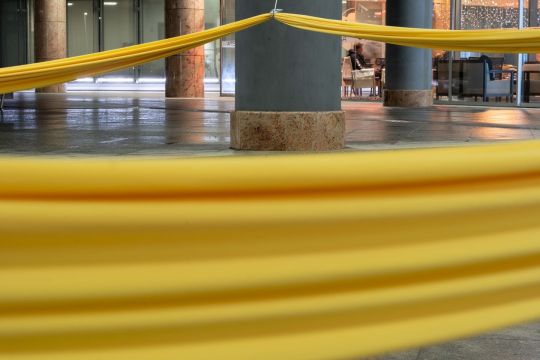
Moon on the Sea at the 28th Slavonian Biennial "New Paradigms of Happiness, from Osijek Dada to Contemporary Chaos" curated by Valentina Radoš
Photo: Tomislav Herega
#art#kaloyan ivanov#installation#moon on the sea#participatory installation#28th slavonian biennial#osijek#croatia#yellow
1 note
·
View note
Text
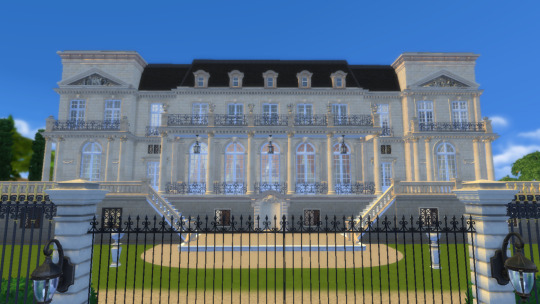
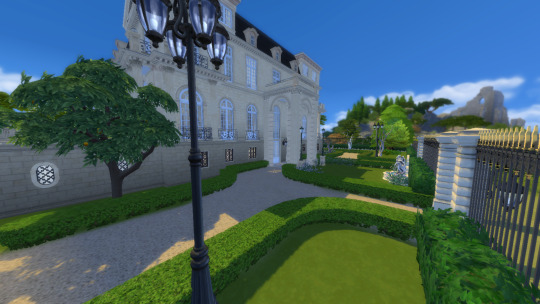
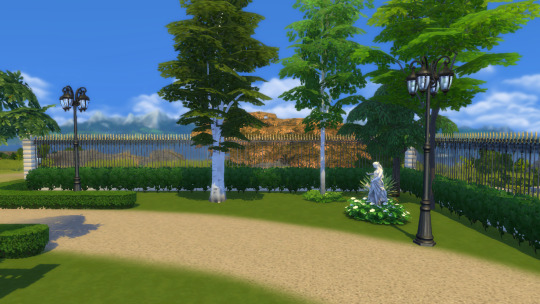
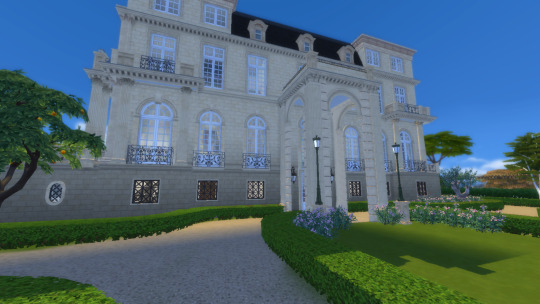
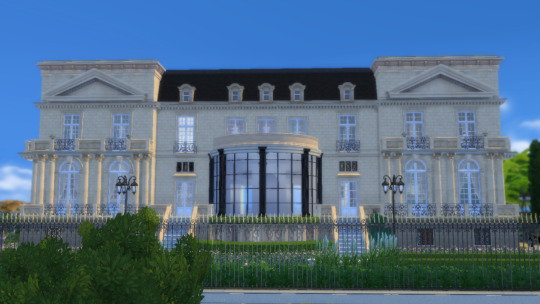
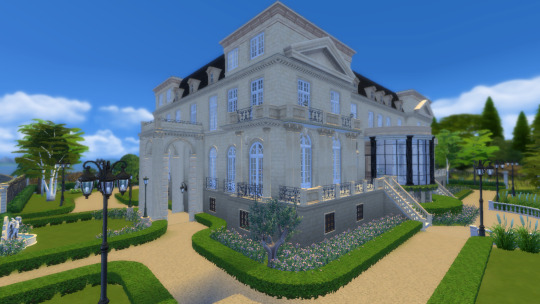
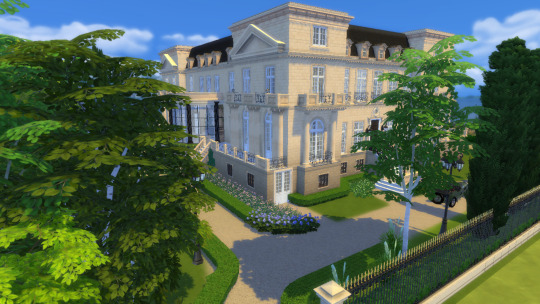
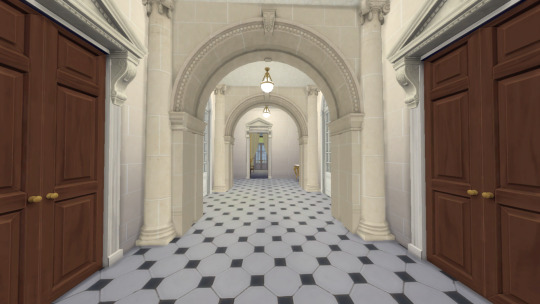
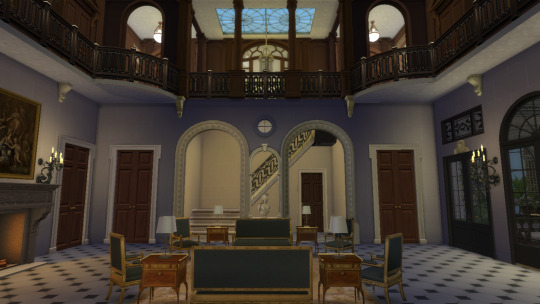
Sans Souci Palace
Hi gouys! This is the Sans Souci Palace, located in Buenos Aires, Argentina.
This house is set to be in a 64x64 Lot. You will need all cc from The Jim, Felixandre, SYB, Marble Mortal, GSsims, etc. It is the usual content I use for my houses.
I made the third floor but it is not completed. In fact, the residence does not have this 3rd floor, but the roof looked weird w/o it.
Some history:
The Sans Souci Palace, located in Victoria, is undoubtedly one of the architectural landmarks not only of San Fernando but also of the northern region. This December marks 100 years since its official inauguration. Its history is intertwined with the history of the neighborhood, and its construction marked a turning point in the urban vision of the district's waterfront.
To briefly recount its history, we can go back to 1911 when the Alvear siblings, Carlos María, Josefina, and Elisa, married to Mercedes Elortondo, Matías Errázuriz, and Ernesto Bosch, respectively, traveled to Paris, France, in search of an architect to design their residences on the embankments of the area. The three couples chose the trendy architect of the time: René Sergent, considered the best in neoclassical and Versailles-style architecture.
The French architect also built the Bosch Palace in Buenos Aires, which serves as the official residence of the United States ambassador, and the Errázuriz Palace, now the Museum of Decorative Arts. The Sans Souci palace, owned by Carlos María de Alvear and his family, was the last of the three projects to be designed.
In 1914, the builders Eduardo Lanús and Pablo Hary laid the foundation stone of the Palace on the land inherited by Alvear's wife in Victoria, San Fernando. In December 1918, it was officially inaugurated.
Its four facades are made of imitation stone. The stairs are made of Paris marble, while the rest of the details and finishes, although they appear to be genuine, are imitations. The imitation marble was created by Swiss craftsmen from the Italian canton who were specialists in this technique. All the carpentry in the Sans Souci Palace was made of Slavonian oak. The doors were painted to imitate the wood grain, giving them identical marks.
The gardens, which initially covered 9 hectares, were designed by the French landscape architect Carlos Thays. During the construction of the Palace, Alvear tried to buy the neighboring property belonging to the Lanusse family with the intention of demolishing it and expanding his garden. However, the Lanusse family never agreed, so a huge wall was built. Thays not only organized the garden but also planted a group of trees to hide the large wall, making it appear as though the house extended further.
(From https://www.quepasaweb.com.ar/100-anos-palacio-sans-souci-san-fernando/)
DOWNLOAD HERE: patreon.com/user?u=75230453

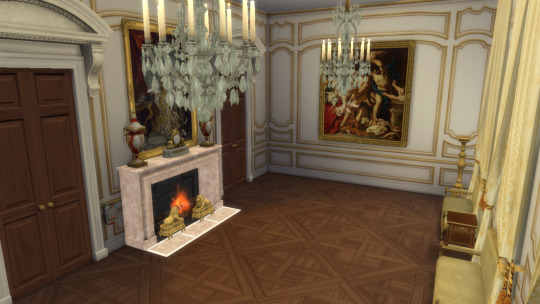


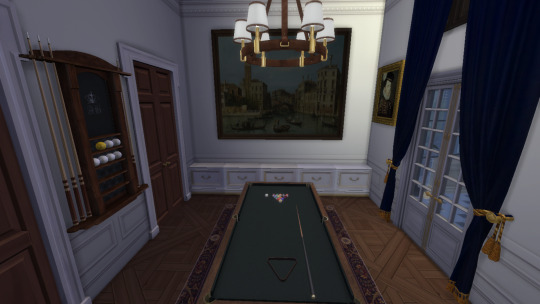
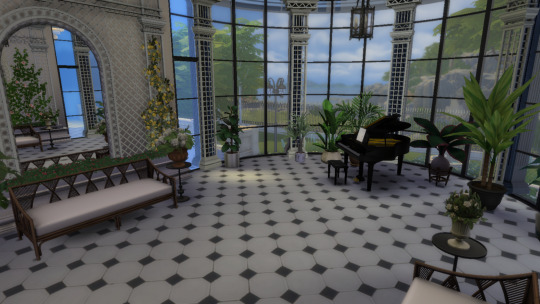
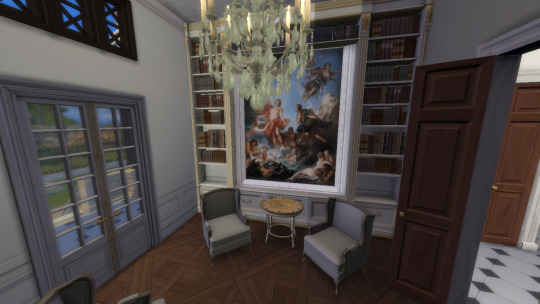
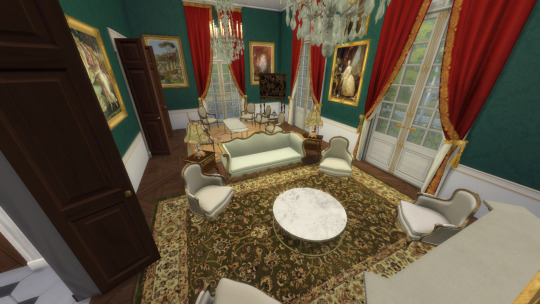
#sims 4 architecture#sims 4 build#sims4palace#sims4#sims 4 screenshots#sims4play#sims 4 historical#sims4building#sims 4 royalty#sims4frencharchitecture#ts4#ts4 build#ts4 screenshots#the sims 4#sims 4
41 notes
·
View notes
Text
i completely forgot about hippolyte havel's very nice article from a few years after the assassination. that's pretty neat. "I remember vividly the change in his face when I told him that my knowledge of the Polish language was too limited to converse in it. The Slavonian sound was soft and melodious, but his voice displayed a hard ring when he began to speak English. His entire demeanor became more rigid." <-paragraphs that are soooo interesting to me
6 notes
·
View notes